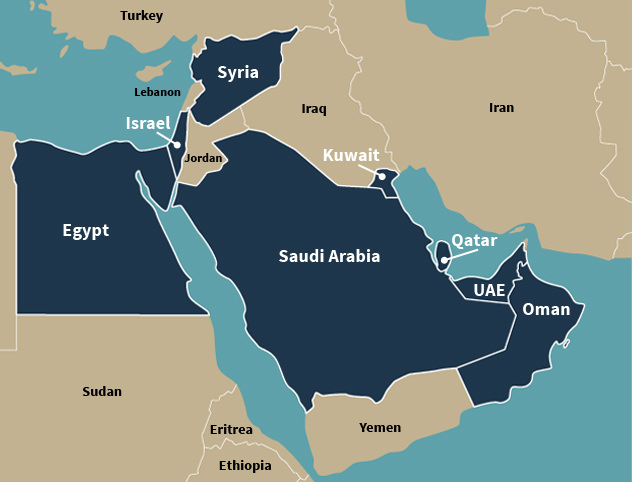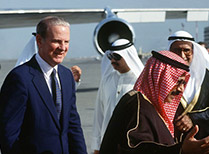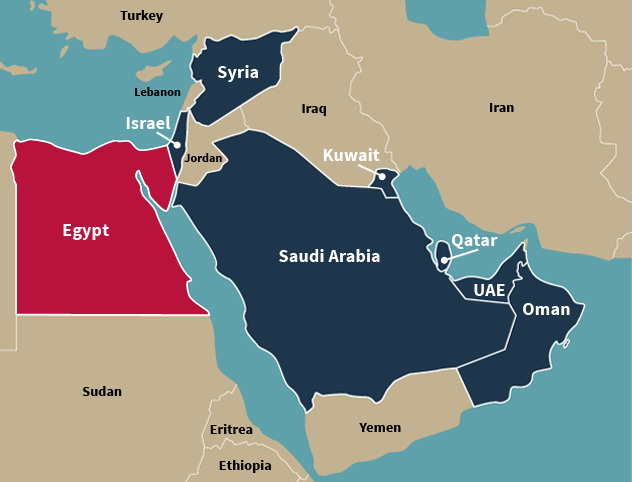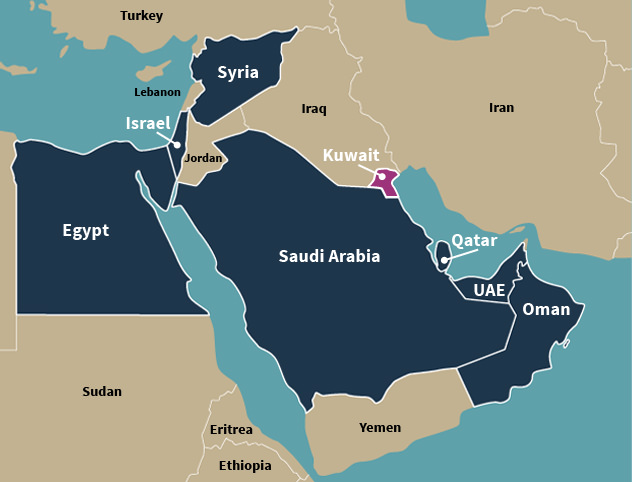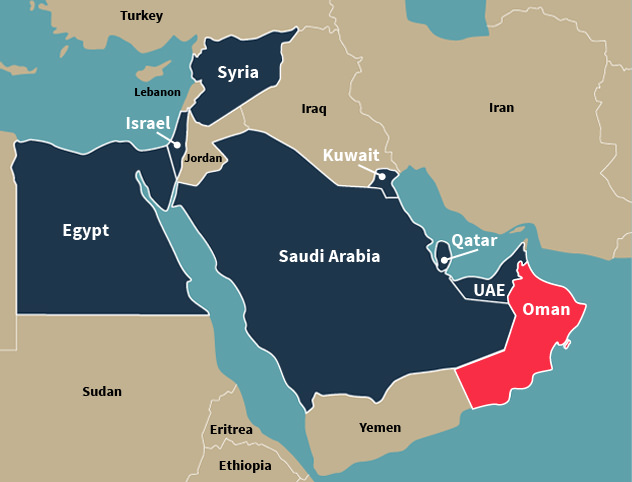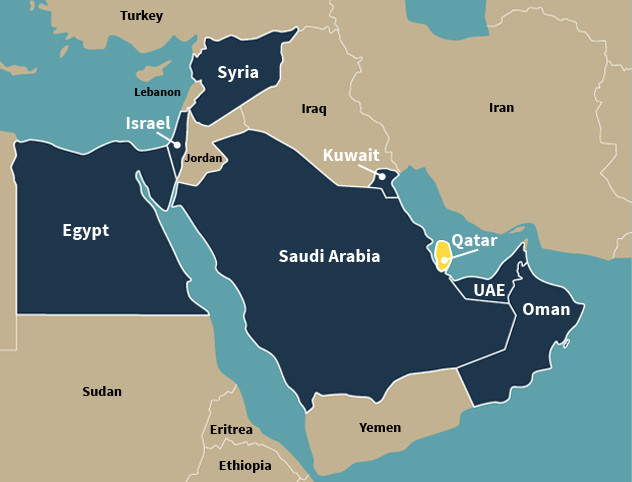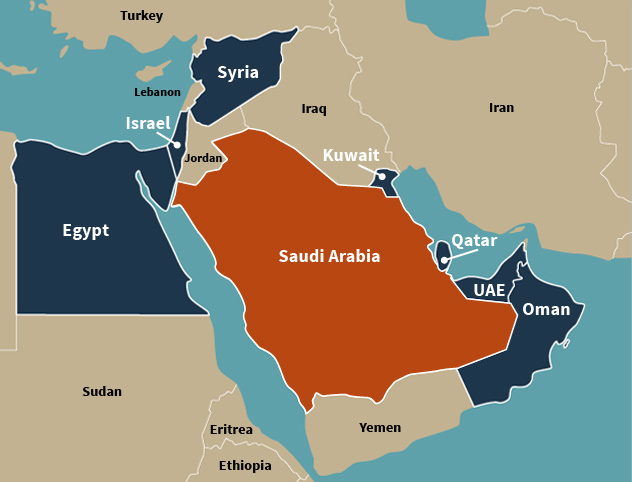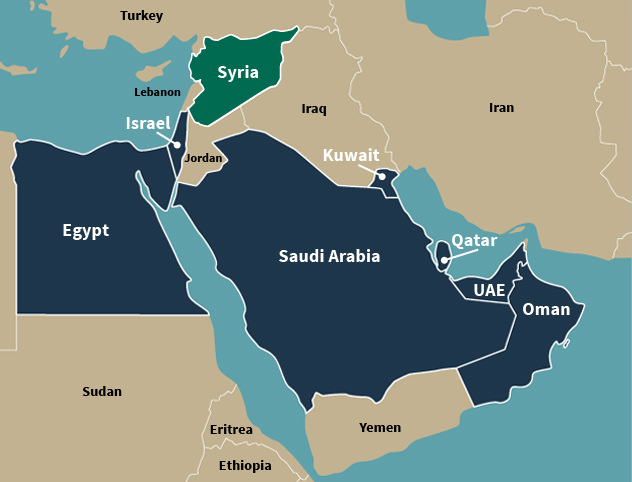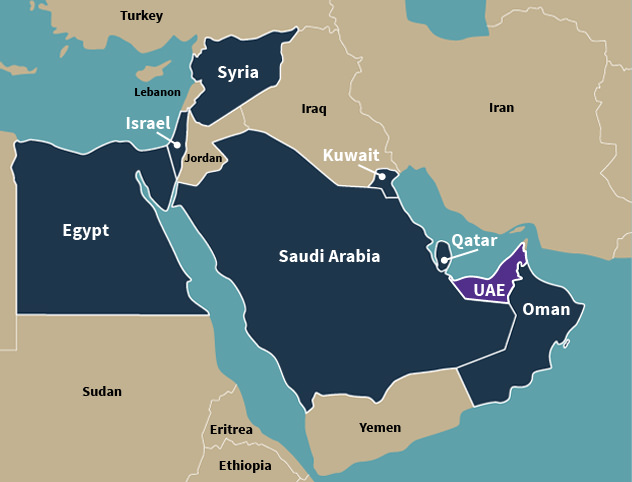James Baker as a Coalition Builder
Watch this video clip from the documentary to get a better sense of how Baker built a coalition of nations in support of taking action against Iraq. As you watch the clip, ask yourself:
- What benefits did the coalition provide the United States?
- What difficulties did Baker face in creating the coalition against Hussein?
A coalition is a group of diverse entities that come together for a common cause. On a small scale, a coalition may be a group of people. On a larger scale, it could be made up of multiple organizations or nations. Frequently the entities within a coalition have differing viewpoints or beliefs, which they attempt to bridge via the coalition.
In August of 1990 Iraqi dictator Saddam Hussein invaded neighboring Kuwait. Hussein claimed that Kuwait was part of the Iraqi empire, and that it had been excised (taxed) arbitrarily by the British 77 years earlier. But most outsiders interpreted the invasion as a land-grab for Kuwait’s vast oilfields. All eyes were on the United States and President George Bush. How would the world’s lone superpower respond to the invasion?
Secretary of State James Baker believed that the United States should not act alone against Hussein. Instead, Baker immediately sought to create an international coalition. He took his cause to the United Nations (U.N.), which issued resolutions condemning the invasion and imposing sanctions against Iraq. Baker was particularly mindful of obtaining support from Iraq’s Arab neighbors and also from the Soviet Union. By working through the U.N. and creating a coalition of support, the U.S. could ensure maximum legitimacy for its response to Hussein. Later, the coalition members would share the burden of military action against Hussein.
Explore the interactive map of the Middle East to see the physical proximity of the players in the coalition building efforts. Click on the interactive map below to get more information.
